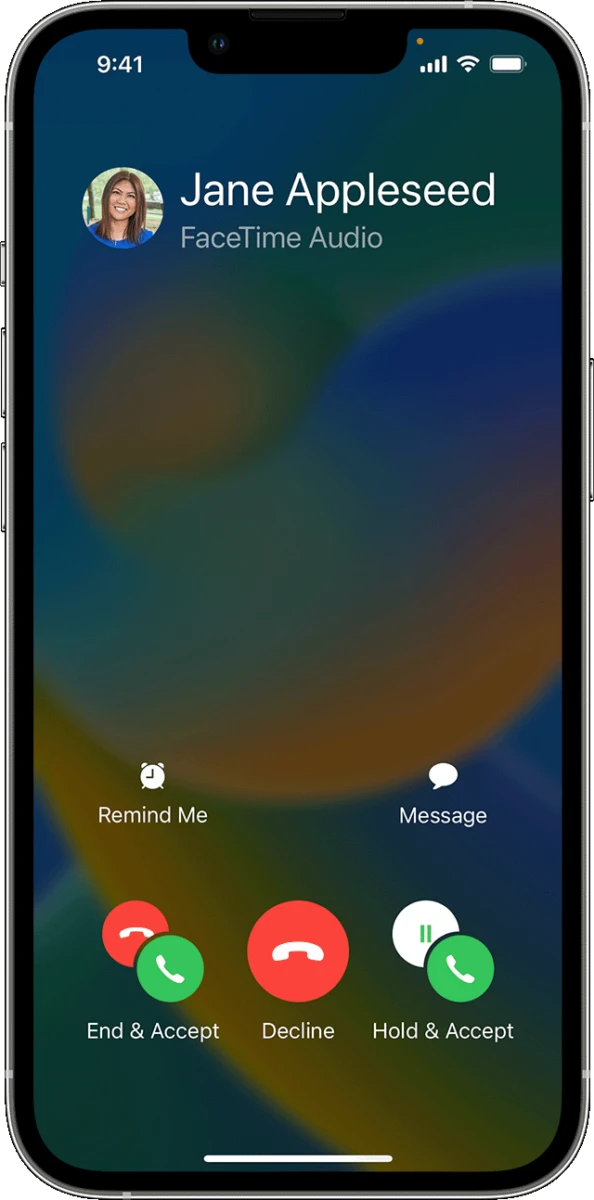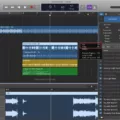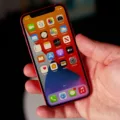In today’s digital age, communication has become incredibly convenient and accessible. With the rise of smartphones, we can now connect with people from around the world with just a few taps on our screens. One such feature that has revolutionized the way we communicate is FaceTime Audio.
FaceTime Audio is a voice-based calling feature developed by Apple for its iOS devices. It allows users to make high-quality audio calls over a cellular or Wi-Fi connection. What sets FaceTime Audio apart from traditional phone calls is its use of Voice over Internet Protocol (VoIP) technology. This means that instead of relying on traditional phone networks, FaceTime Audio uses the internet to transmit voice data.
The use of VoIP technology brings several benefits to FaceTime Audio users. Firstly, it offers better call quality compared to regular phone calls. Since the audio data is transmitted over the internet, it is not subject to the limitations and inconsistencies of cellular networks. This results in clearer and more reliable calls, ensuring that you can hear and be heard without any distortion or dropped calls.
Another advantage of FaceTime Audio is its efficiency in data usage. Traditional phone calls consume a significant amount of data, especially for long conversations. In contrast, FaceTime Audio uses a much smaller amount of data. On average, FaceTime Audio consumes around 50 kilobits per second (kbps) for any codec. This translates to approximately 0.75 megabytes (MB) per minute of conversation. For instance, an hour-long FaceTime Audio call would consume roughly 45 MB of data.
To use FaceTime Audio, you need a cellular or Wi-Fi connection. If you’re using an iPhone or iPad, ensure that FaceTime is turned on in your device’s settings. Additionally, make sure that “Use Cellular Data” is enabled for FaceTime if you want to use it over a cellular network.
FaceTime Audio is not only limited to Apple devices. It also works seamlessly between iOS devices, Mac computers, and even Apple Watch. This cross-device compatibility allows you to make and receive calls from various Apple devices, ensuring that you are always connected with your loved ones or colleagues.
FaceTime Audio is a convenient and efficient way to make high-quality voice calls. With its use of VoIP technology, it offers superior call quality compared to traditional phone calls. Additionally, it consumes less data, making it a cost-effective option for those with limited data plans. Whether you’re connecting with friends, family, or business associates, FaceTime Audio provides a reliable and enjoyable calling experience. So go ahead, make your voice heard with FaceTime Audio.

Can You Use FaceTime Audio With Data?
It is possible to use FaceTime audio with cellular data on your device. To enable this feature, follow these steps:
1. On your iPhone or iPad, go to the Settings app.
2. Scroll down and tap on “Cellular” (or “Mobile Data” on some devices).
3. Ensure that the Cellular Data option is turned on.
4. Scroll further down and locate the FaceTime option.
5. Tap on FaceTime and ensure that the toggle switch is turned on.
By enabling the Use Cellular Data option for FaceTime, you will be able to make audio calls using FaceTime even when you are not connected to a Wi-Fi network. This allows you to use FaceTime audio while using your cellular data plan.
Please note that using FaceTime audio over cellular data may consume a significant amount of data, especially if you make long or frequent calls. It is important to keep track of your data usage and consider any limitations or charges imposed by your cellular carrier.
Advantages of using FaceTime audio over cellular data include the ability to make calls in situations where Wi-Fi is not available and the convenience of using a single platform for both voice and video calls.
Is FaceTime Audio Better Than A Regular Call?
FaceTime audio is generally considered to be better than a regular phone call in terms of call quality. This is because FaceTime audio uses Voice over Internet Protocol (VoIP) technology, which allows for higher audio fidelity and better connection stability compared to traditional phone calls.
When making a FaceTime audio call, your voice is transmitted over the internet instead of through a cellular network. This means that call quality can be affected by the strength and stability of your internet connection. However, assuming you have a good internet connection, FaceTime audio can provide clearer and more consistent audio quality compared to regular phone calls.
Another advantage of FaceTime audio is that it can work over both Wi-Fi and cellular data connections, giving you flexibility in making calls from various locations. However, it’s worth noting that using FaceTime audio over cellular data may consume more data compared to regular phone calls, so it’s important to monitor your data usage if you have a limited data plan.
FaceTime audio offers better call quality than a regular phone call due to its use of VoIP technology. It provides clearer and more consistent audio, as long as you have a stable internet connection. It is also versatile in terms of working over Wi-Fi and cellular data, but be mindful of your data usage if you are on a limited plan.
Does FaceTime Audio Use Wi-Fi Or Cellular?
FaceTime audio can be used with both Wi-Fi and cellular connections. However, it is important to note that the availability and quality of the service may vary depending on the type of connection used. Here is a breakdown of how FaceTime audio works with Wi-Fi and cellular:
Using Wi-Fi:
1. FaceTime audio uses Wi-Fi by default when both the caller and recipient are connected to a Wi-Fi network.
2. When using Wi-Fi, FaceTime audio does not consume cellular data.
3. Wi-Fi connections generally provide a more stable and reliable connection for FaceTime audio calls.
4. FaceTime audio calls made through Wi-Fi are not subject to any additional charges from your cellular carrier.
Using Cellular:
1. FaceTime audio can also be used over a cellular connection when Wi-Fi is not available.
2. When using cellular data, FaceTime audio calls will consume data from your cellular plan.
3. The amount of data used during a FaceTime audio call can vary depending on the call duration and quality.
4. It is important to monitor your data usage if you frequently make FaceTime audio calls using cellular, as it may contribute to your monthly data allowance or result in additional charges if you exceed your plan’s limits.
FaceTime audio can be used with both Wi-Fi and cellular connections. Wi-Fi provides a more stable and reliable connection, while cellular allows you to make calls when Wi-Fi is not available. When using cellular, be mindful of your data usage to avoid exceeding your plan’s limits or incurring additional charges.
How Much Data Do Audio Calls Use?
Audio calls use data based on the codec being utilized. Codecs are algorithms that compress and decompress audio signals for transmission over the internet. The amount of data consumed by an audio call depends on the codec’s bitrate, which is measured in kilobits per second (kbps).
On average, we can assume a bitrate of 50 kbps for most codecs. This means that for every second of an audio call, approximately 50 kilobits (or 6.25 kilobytes) of data are consumed. To calculate the data usage for a specific duration, such as an hour-long conversation, we need to consider the number of seconds in an hour.
There are 3,600 seconds in an hour (60 seconds × 60 minutes). Multiplying this by the bitrate of 50 kbps gives us the total data consumed in kilobits for an hour-long audio call:
3,600 seconds × 50 kbps = 180,000 kilobits
To convert this to megabytes (MB), we divide by 8 (since there are 8 bits in a byte):
180,000 kilobits ÷ 8 = 22,500 kilobytes or 22.5 megabytes (MB)
Therefore, an hour-long audio call using an average bitrate of 50 kbps will consume approximately 22.5 MB of data.
It’s important to note that this calculation is an estimate based on the assumed bitrate. The actual data usage may vary depending on the specific codec, network conditions, and any additional data overhead incurred during the call.
Conclusion
FaceTime Audio is a fantastic option for making voice-based calls on your iPhone or iPad. With its VoIP technology, it offers superior call quality compared to regular phone calls. Whether you’re using a cellular or Wi-Fi connection, you can enjoy clear and reliable audio communication through FaceTime Audio.
To ensure a smooth experience, make sure to enable FaceTime in your device’s settings and ensure that cellular data is turned on for FaceTime. This will allow you to use FaceTime Audio even when you’re on the go and don’t have access to Wi-Fi. Keep in mind that data usage for FaceTime Audio is relatively low, with an estimated consumption of 0.75 MB per minute of conversation.
Whether you’re catching up with friends and family or conducting business calls, FaceTime Audio provides a convenient and high-quality solution. Its integration with the Apple ecosystem makes it easily accessible and user-friendly. So, next time you want to make a voice call, consider using FaceTime Audio for an enhanced communication experience.













